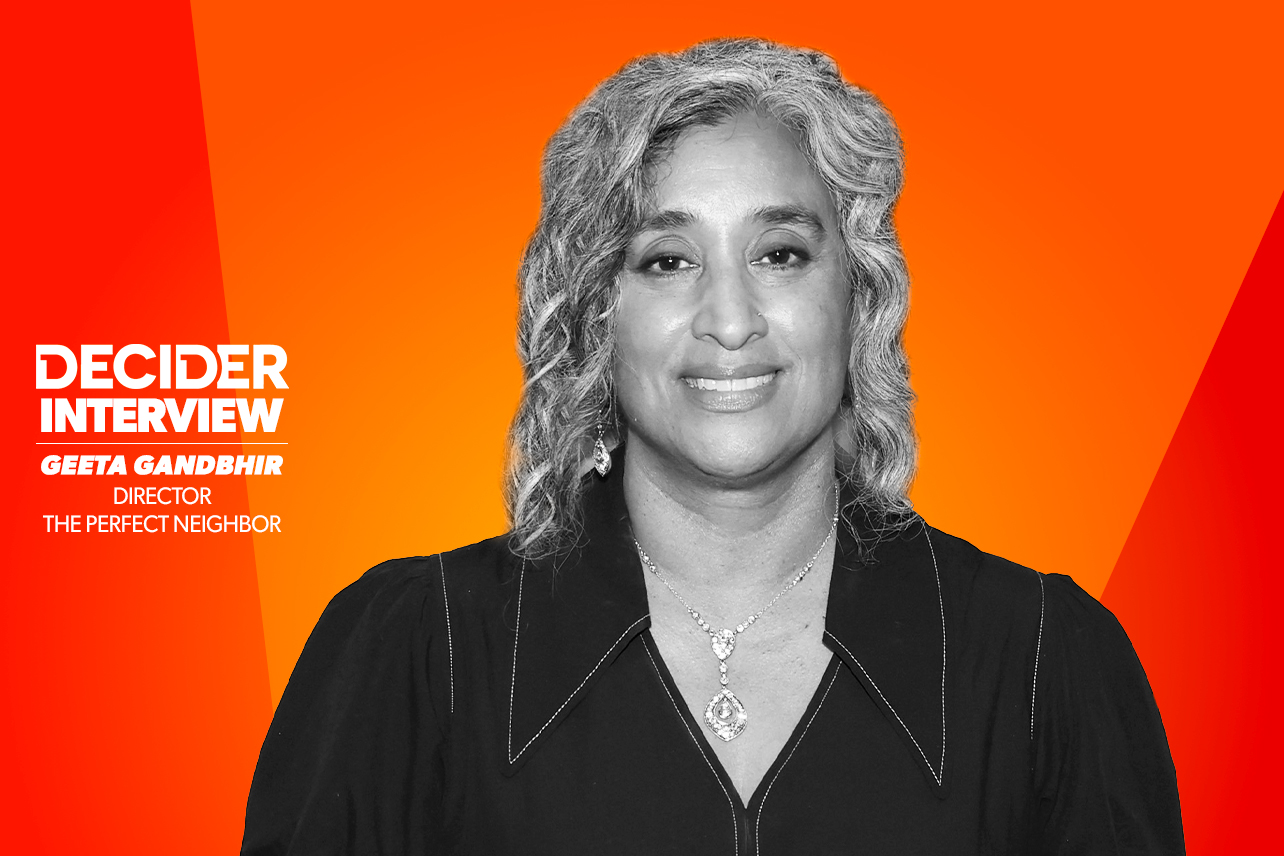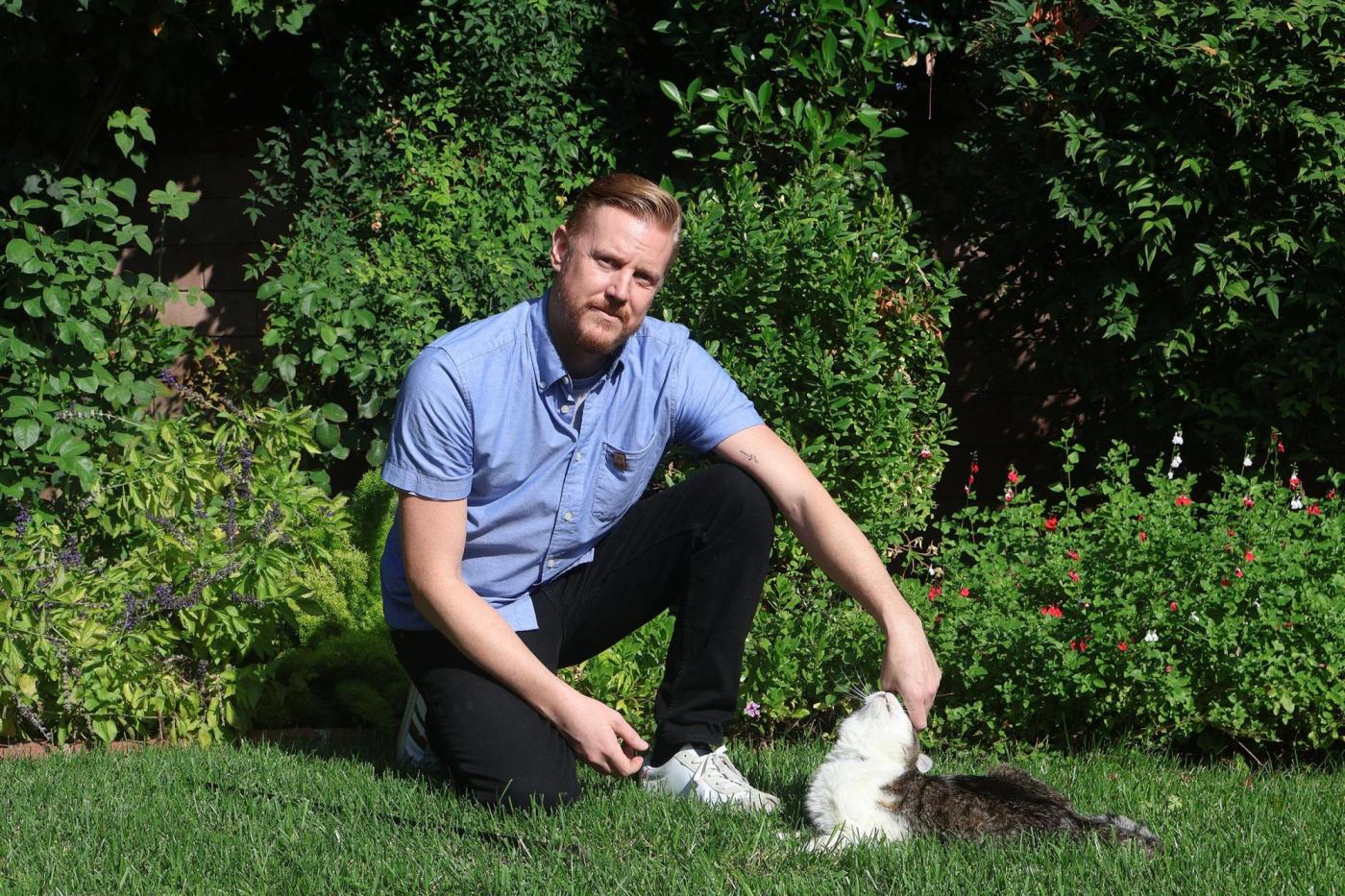**“The Perfect Neighbor” Director Geeta Gandbhir on Body Cameras, Stand-Your-Ground Laws, and Seeking Justice**
Director Geeta Gandbhir intimately understands the fraught relationship Black Americans have with police body camera footage. In a recent interview with Decider, she remarked, “Body camera footage is a violent tool of the state that is used, too often, to criminalize people of color. Or used for surveillance to protect the police. We wanted to flip that on its head, and use it to humanize the community.”
That mission is at the heart of her new Netflix documentary, *The Perfect Neighbor*, which began streaming today. The film is composed almost entirely of body camera footage, chronicling the two-year lead-up to the tragic shooting of 35-year-old Ajike Owens, a Black man killed by his white Florida neighbor, Susan Lorincz, through her front door in June 2023.
As seen in the footage, Lorincz repeatedly called the police on her neighbors because she disapproved of children playing near what she considered “her property” — despite being a renter. After the shooting, Lorincz sought to use Florida’s stand-your-ground law as a defense, claiming she feared for her life when Owens reportedly banged on her door demanding to talk, following an incident where her son alleged Lorincz threw a pair of skates at him.
In 2024, Lorincz was convicted of manslaughter and sentenced to 25 years in prison. But as Gandbhir points out, “There is no bringing Owens back to life for her four children.”
“Laws like stand-your-ground embolden people to take matters into their own hands, commit crimes, and then claim self-defense,” Gandbhir explained. Earlier this year, she won the Sundance 2025 US Documentary Competition Directing Award for *The Perfect Neighbor*. In an exclusive talk with Decider, Gandbhir delved into creating a film almost entirely from police footage, tough editorial decisions, and the change she hopes the documentary will inspire.
—
### The Beginning: Discovering the Story
Ajike Owens was a family friend of Gandbhir’s, close to two of her relatives. When the shooting happened, the team was notified by Takema Robinson, an executive producer and family friend. They immediately mobilized to support Owens’ family, especially his mother-in-law Pamela Dias, who was instrumental in getting the story into the public eye—particularly since Lorincz was not arrested immediately.
“We were worried about stand-your-ground,” Gandbhir said, referencing the infamous Trayvon Martin case where George Zimmerman used the same law as a defense.
About two months later, the filmmakers obtained body cam footage through a Freedom of Information Act request filed by the attorneys working with Pamela Dias. The Marion County Sheriff’s Department released approximately 30 hours of mixed material — including cell phone, ring camera, dash cam footage, police calls, and detective interviews.
“I spent a lot of time piecing together the timeline,” Gandbhir shared, recalling the challenge of syncing poor-quality audio and chaotic footage. “It was grief work for me. That emotional labor was my process.”
Eventually, Gandbhir and her producer and partner, Nikon Kwantu, saw the potential to craft the story into a film.
—
### Choosing an Immersive Approach
Decider asked if the team considered using talking-head interviews to add context.
“There were points where we wrestled with that,” Gandbhir admitted. “But the decision was to commit fully to the footage. We wanted to live inside it.”
She continued, “Body camera footage is a violent tool of the state used to criminalize people of color or protect the police. We wanted to flip that on its head and humanize the community.”
The filmmakers aimed for a narrative with the tension of a thriller, trusting audiences to engage without explanatory interviews.
Additional voiceovers in the film stem from post-murder detective interviews with Ajike’s friends and family, not newly recorded commentary. The team also captured footage of funerals, vigils, and protests to support news coverage.
—
### The Toughest Moments: Handling Sensitive Footage
The most difficult scenes include the immediate aftermath of Ajike’s death — when his family, including his young son, is informed of the tragedy. “There were 10 to 15 officers on scene that night,” Gandbhir said, “so the footage was chaotic. We wanted viewers to feel that tension and uncertainty.”
Yet, the editing also intentionally slows down during family conversations, allowing audiences space to sit with the grief.
Some extremely distressing footage, such as attempts to revive Ajike, was omitted to avoid exploitation. Still, Gandbhir emphasized they included enough of the hardest scenes after discussing with Pamela Dias, who insisted, “Put it in. Everybody needs to see what happened.”
“We are numb to gun violence, but this shows the real aftermath. People have to tell their loved ones someone is gone,” she said. “We want audiences to bear witness. It’s hard, but necessary if we want change.”
—
### The Role of Police and the Failure of the System
Interestingly, police officers depicted in the documentary do not act aggressively towards the community or Lorincz. Instead, despite her harassment—using hate speech, filming children, threatening neighbors with a gun, and physically assaulting them with thrown objects—the police regarded her mostly as a nuisance.
“They never saw Susan as a threat, but her access to guns, combined with laws like stand-your-ground, turned her into a deadly threat,” Gandbhir explained.
She criticized the police for failing to protect the community more proactively through harassment charges or restraining orders. “The police bring their own biases. Had she been a person of color, things might have gone very differently.”
—
### Lorincz’s Arrest: Weaponizing Privilege
The arrest footage of Susan Lorincz is striking. She refuses to comply for a long time, attempting to wield her privilege and status to avoid consequences.
“It takes the officers a long time to get her out of the chair,” Gandbhir noted. “We purposely let that scene play out fully so people could sit with it and see her disbelief that this could happen.”
Ultimately, the police charged Lorincz with voluntary manslaughter. Gandbhir suspects they chose manslaughter over first-degree murder because the latter was “lower-hanging fruit” given the political context and previous outcomes with cases like Trayvon Martin’s.
—
### Did Lorincz Plan the Shooting?
Gandbhir believes Lorincz understood the stand-your-ground law could be used in her defense, although Lorincz continues to claim she feared for her life.
“Through a locked metal door, so Ajike couldn’t have broken in,” Gandbhir pointed out.
She says Lorincz “thought stand-your-ground was a tool to get away with it.”
—
### Has Lorincz Responded to the Documentary?
Lorincz recently did a local news interview, so the filmmakers assume she is aware of the film. However, Gandbhir clarified, “We are not in contact with her. The film is about immersing in the footage. We didn’t feel it was important to include her voice; she makes herself clear in the material we have.”
—
### The Family’s Reaction
Ajike’s mother saw the completed documentary—though she was not involved in its creation—and gave the filmmakers her full blessing.
“She could have asked us to scrap it, but she said, ‘We need to continue. I want this out,’” Gandbhir shared.
Although the community has viewed the film, the family’s children have not — as they are on a healing journey, and it’s not deemed necessary or healthy for them to see.
—
### Looking Ahead: Awards and Impact
Gandbhir was recently honored with the Directing Award at Sundance. When asked about potential Oscar campaigns, she emphasized the film’s purpose beyond accolades.
“We want this film to be a call to action.”
She cited horrifying statistics linking stand-your-ground laws to hundreds of additional deaths yearly and stressed the urgent need for gun reform.
“Netflix offers a global platform, so anything that increases viewers and builds momentum is meaningful,” Gandbhir said. “It takes a global movement to change laws and bring about cultural shifts. We are grateful for a partner that allows global viewing and increased awareness.”
—
*This interview has been edited and condensed for length and clarity.*
https://decider.com/2025/10/17/the-perfect-neighbor-netflix-documentary-director-interview-geeta-gandbhir-susan-lorincz/



